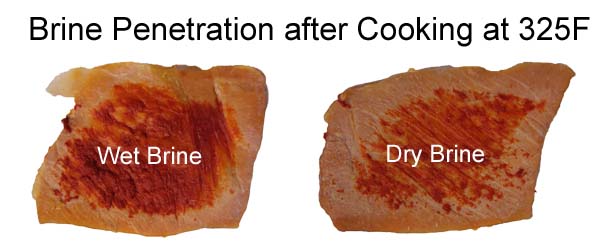Brine
Brine ( from spätmittelhochdt sul, sol salt broth ) is an aqueous solution of salts containing at least 14 g of solute per 1 kg of water. Originally the term referred only saline solutions from which salt was extracted from natural brine springs in salt pans, salt works, salt mines or the sea. Evaporation of the sun ( evaporation) or boiling the brine is then obtained saline. The term brine is still used mainly for suitably concentrated sodium chloride solutions.
Solution mining
For the simpler industrial salt mining or transport the salt using water from the mountain won ( solution mining or solution mining ). The earlier - and still sporadically - technique used is the creation of lye chambers (about 2-3 m high rooms ) in the mountain, which are filled with water. The salt slowly in the water in solution. After reaching the natural saturation ( approximately 26% salinity) is pumped off the brine.
Modern Solverfahren
Today, the collection mostly through hole probes. Here, a deep hole is driven by the salt deposits. Two concentric purging pipes are hung in the well bore. In the first phase of brining fresh water is introduced through the lower hanging central tube. The resulting brine is on the outer toilet cistern after about day displaced (direct Solverfahren ).
In the course of degradation is the flushing circuit reversed ( indirect Solverfahren ). Here, the fresh water through the annular space of the purge tubes into the cavern reaches saturates on the way down with salt slowly and leaves the cavern on the lower hanging central tube as brine. In order to secure the ridge of the resulting cavity a protective liquid ( Blanket ) is introduced via the outer flushing pipe. A lower density layered it over the water and prevents vertical solution mining.
The cavities created by solution mining over drilling probes often respectable size (diameter up to 80 m, height up to 500 m, volume up to about 1 million cubic meters ). Today, they are often used because of the natural tightness as underground storage facilities for natural gas and oil, the brine is used as compensation liquid in the storage of petroleum. If oil is pumped into the tank, the brine is expelled. The outsourcing of oil is again by pumping brine.
Sole processing
The further processing of the brine takes place in a Saline. The Saline Conow, located in southwest Mecklenburg in the district Conow the community Malliß district Ludwigslust - Parchim was first documented on 28 August 1307. Rudolf I (Saxony- Wittenberg) of Saxe- Wittenberg had - shortly after taking possession of the country Doemitz - the nuns of the monastery Eldena given, on whose possessions the salt source was discovered.
Another of the many salt mines (see list to the salt mines of Germany ) existed in Ebensee in the Salzkammergut region since 1607. In Bad Reichenhall, where there is a saline since the Roman period, the most important natural salt deposits was discovered in the High Middle Ages. Until today, salt is in Bad Reichenhall from brine, also from the affiliated with the New saline through a pipeline Berchtesgaden Salt Mine produced. In the tourism sector the brine line Reichenhall- Traunstein is often described as " oldest pipeline in the world ".
Application
In addition, one uses brine in the food industry for quick freezing of meat and fish. For this purpose, the brine is cooled to -35 ° C and immersed in the product. Thus all the oxygen is turned off, preventing Salmonella contamination.
Another application area is the winter service. Firstly, the use of it for moistening of road salt; the winter service vehicles have a tank of brine, which is added to the road salt during application to achieve a faster thaws and drift prevent ( prewetted ). Secondly, she comes alone (ie, without a dry salt) in FAST and special winter service vehicles with liquid spinner machines.
Engineered brines Also in heat pump applications as a refrigerant.
Medical Application
In medicine saline solutions are designated with a salt content of 1.5 to 6% brine. The medical effectiveness of brine applications in some skin diseases is undisputed in other application areas, the effectiveness is questioned. There are brine - water cures, salt rinses, salt baths, salt rubs, brine envelopes and brine inhalations.
Sole is in the touristy often well-developed salt baths, among others in skin diseases, allergies, colds, indigestion, metabolic disorders, kidney and bladder diseases, " nervous disorders ", poor concentration and sleep disturbance applied.
Touted by proponents effects of treatment for cancer, " female complaints ", eye disease, heavy metals are not scientifically proven. Reputable providers emphasize rather the effect of fun, recreation and entertainment in the overall context of a bath stay, the indications restrict considerably and mention the contraindications.









